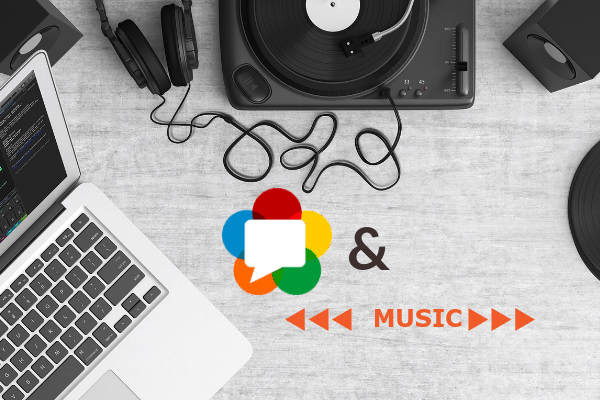When it comes to different verticals and market niches, it seems like WebRTC can fit anywhere.

6 years in, and there are many who still question if WebRTC is the way to go with their use case.
Here’s an example for you.
Musicians of all kinds make use of WebRTC. They have services today that are geared towards their specific needs. And I am not talking only about replacing Skype with a marketplace or a searchable directory of experts that can help you take private guitar lessons online.
When I bumped into Profound Studio, I knew this is an area I’d like to write a bit more about, so here it goes.
What I will be doing in this article, is go over some of the vendors found in the WebRTC Dataset, collected over the years, who are playing a role in the sound/music industry in one way or another.
I won’t be picking favorites here – my own experience with music is rather dull – I like to hear music just like anyone else, but I don’t consider myself an expert or a fan of anything really. This means that we’ll be going in alphabetic order of the vendors.
Care 2 Rock
Care 2 Rock is that we-teach-guitar-lessons use case with a twist.
The basic premise is having teaching music lessons of any kind online, through a video call. The twist is that this is a paid/voluntary act on the side of the teacher, who ends up teaching and mentoring a foster care kid in his community.
Profound Studio
Profound Studio connects musicians with recording experts.
This is a marketplace for professionals – not for hobbyists. You can run live classes there or do consultation calls.
sofasession
sofasession is all about musicians making music together online. The majority of it is done asynchronously, where each musician contributes and edits tracks of the final masterpiece, but they don’t need to be live together at the same time. And still, this kind of a use case can use WebRTC.
Here’s a job posting they had from two years ago:
We will use Kurento as media server and extending the service for multitrack mixing and reducing latency by developing latency reducing algorithms for serving content to clients connected via the webRTC protocol.
For the layman, handling audio in realtime in the browser to handle that mixing module that’s inside sofasession requires low latency. The best way to get there is to have something like WebRTC manage it – we are talking about real time here.
I am not sure if and how far they went with their WebRTC support. They do support live jam sessions, but there’s a need to download dedicated software for that. It does use UDP to work, so there still might be some WebRTC in there.
Soundtrap
Soundtrap is similar to sofasessions. It too focuses on musicians collaborating online.
Based in Stockholm, where some of the Google WebRTC team are located, even got it to appear at Google I/O in 2014:
StreetJelly
StreetJelly is about live performances. It allows artists to stream their music live to a global audience.
At the moment, performing and viewing is free. Viewers can tip performers if they want.
On the technical side, StreetJelly uses HTML5 video playback for the viewers and either Flash (now dead) or WebRTC (the new method for StreetJelly) to be able to broadcast the performances. They explain this further here.
Shots in the dark
Other vendors such as Rapt.fm and unltd.fm came and went.
As with any set of startups, the vendors in this space don’t always succeed.
How will others fair? Time will tell.
The Appeal
Music and WebRTC. There’s an appeal there.
VoIP was crap most of the time up until recently. There were two main reasons for it:
- The selection of voice codecs, with the dominant ones being narrowband codecs like G.711 or the G.729. When you did get a better sounding codec, it was either protected by patents, not suitable for real time or just stuck in wideband but still focusing on speech and not music
- These codecs aren’t usually error resilient. The moment you introduce packet loss (and these happen regularly), the audio quality suffers. So something had to be done in that front
WebRTC comes with Opus “out of the box”. A wideband codec suitable for music – not only speech, which is royalty free, low latency and error resilient. To top it all – it is mandatory in WebRTC and one of only two such codecs (the other one being the ridiculously crappy G.711). What’s not to like as a musician?
Why is this important?
Well… here’s the kicker.
None of it is new.
VoIP and video calling could have done this all before WebRTC.
But it didn’t.
Why?
Costs. Barriers of entry. Finding talent.
WebRTC solves all that, which is why I categorize all of these vendors and many others as WebRTC vendors.
They don’t care about WebRTC as a technology – for them it is just means to an end, which is just fine.
